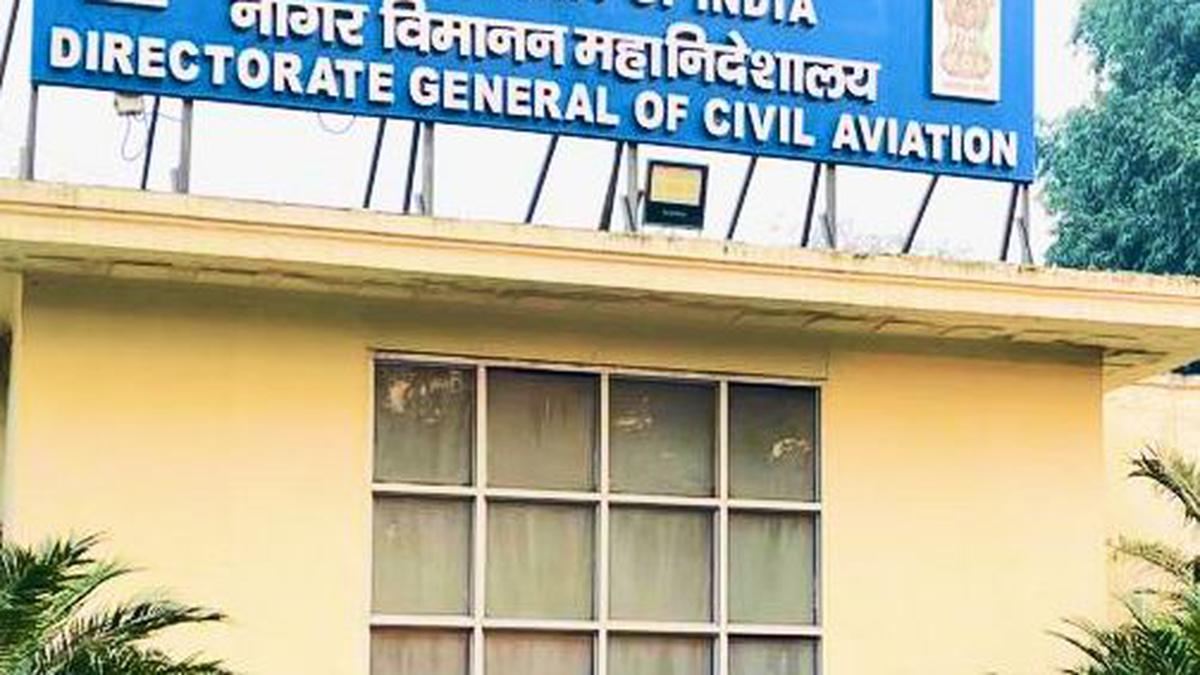The Directorate General of Civil Aviation had notified the revised rules governing duty hours and rest periods for pilots in January 2024. Photo: dgca.gov.in/
The story so far: The Directorate General of Civil Aviation (DGCA) has rejected a request by airlines to postpone new pilot duty norms, reiterating that the revised schedule will have to be implemented from June 1. The DGCA had notified the revised rules governing duty hours and rest periods for pilots in January.
What are the new rules?
The new rules provide enhanced weekly rest for pilots which has gone up from 36 hours to 48 hours. The rules have also reduced night-time flying, which is known to contribute to fatigue and impact alertness levels as sleep is displaced from the optimum part of the circadian rhythm.

Earlier, a pilot could carry out six landings during night-time flying, which has now been reduced to two. The night-time shift has been extended by an hour to 6 a.m, from the earlier midnight to 5 a.m. The maximum flight duty period for flights encroaching night-time has also been reduced from 10 hours to eight hours. While pilots have broadly welcomed the changes, their demand for a ban on two consecutive night duties went unheeded. Pilots say that flying a second night without a reset of the circadian rhythm is extremely stressful. Consecutive night duties result in accumulation of sleep debt and an increase in fatigue related impairment. According to IATA’s Fatigue Management Guide for airlines, recovery of waking alertness and performance after accumulating a sleep debt may take longer than two nights of unrestricted sleep.
Pilots also pointed out that airlines are only required to publish the crew roster “sufficiently in advance” and the time frame has not been defined unambiguously. The draft rules placed for stakeholder comments had proposed that rosters be finalised seven days in advance.
The DGCA also wants airlines to submit an analysis of fatigue reports submitted by pilots on a quarterly basis along with an action taken report. It has also said that it plans to adopt a new regime of fatigue management, known as the Fatigue Risk Management System, which is a data-driven approach to enhance monitoring and reporting of flight crew fatigue though pilots are apprehensive that this could reduce existing rest periods prescribed in the rules.

Why are the airlines opposed to it?
The Federation of Indian Airlines, FIA, comprising Air India, IndiGo and SpiceJet, wrote to the DGCA in February seeking postponement of the June 1 implementation deadline as it could have “immediate and significant impact to business and customers alike” as airlines would be required to hire “15% to 25% more pilots” when it takes approximately 8-10 months to release a newly inducted pilot for flying. The FIA warned that the June 1 deadline could result in the cancellation of 15%-20% of flights by most airlines as well as cancellation of some long-haul international flights. In response, the DGCA reiterated that it will stick to the June 1 deadline.
A senior DGCA official told The Hindu that by speaking about flight cancellations during the peak summer travel season, airlines were indulging in “scaremongering”. He said that a six-month time frame for implementation was provided keeping in mind that a commercial pilot licence holder, who has completed his training on a specific type of aircraft such as an A320 or Boeing 737 MAX, did not need more than four months to be cleared for flying.

Is fatigue mounting?
In a first, the DGCA has acknowledged that unfortunate instances of pilot deaths in the recent past were “ostensibly” due to punishing schedules and cumulative impact on health and well-being of pilots, which it said was an “urgent wake up call” for the industry. There were at least three such deaths while on duty, including the death of IndiGo pilot, Manoj Balasubramani, who fell unconscious at the boarding gate after reporting for duty to operate a flight from Nagpur to Pune on August 17, 2023. He was rushed to hospital, where he passed away.
Pilots say that not only has flying increased for them in the past five years, a growing route network beyond metros has resulted in tougher combination of flights, which involve more landings and are therefore strenuous. For example, the return leg of an international flight is often combined with an additional domestic flight. There are also more red eye flights to short-haul destinations such as in the Gulf and Singapore. Add to this an uncertainty of roster, where a pilot can be called in for a flight for 4 a.m. with just a 12-hour notice. “Denying a duty in such circumstances can lead to disciplinary proceedings,” said a senior pilot of a full-service carrier. Pilots recall Jet Airways days where a printed roster was sacrosanct. There are also rostering malpractices, where pilots are compelled to work beyond their maximum duty hours or provided less rest periods than what is laid down. On March 22, the DGCA imposed a fine of ₹80 lakh on Air India after it discovered lapses during a spot check in January.
How many pilots are registered with DGCA?
Many airlines like Air India and Vistara are already grappling with pilot shortages compared to aircraft strength. As on December 2023, there were a total of 771 aircraft with various Indian airlines and 9,524 commercial pilots registered with the DGCA. Additionally, there were 67 foreign pilots too due to a shortage of commanders on certain aircraft type such as the Boeing 777. India’s commercial airlines are likely to nearly double fleet size to 1,400 by fiscal year 2029-30, shows CAPA data. This will mean airlines will have to add 10,900 additional pilots by 2030, which is nearly 1,600 new pilots a year. Last year, the regulator issued 1,272 commercial pilot licences.







